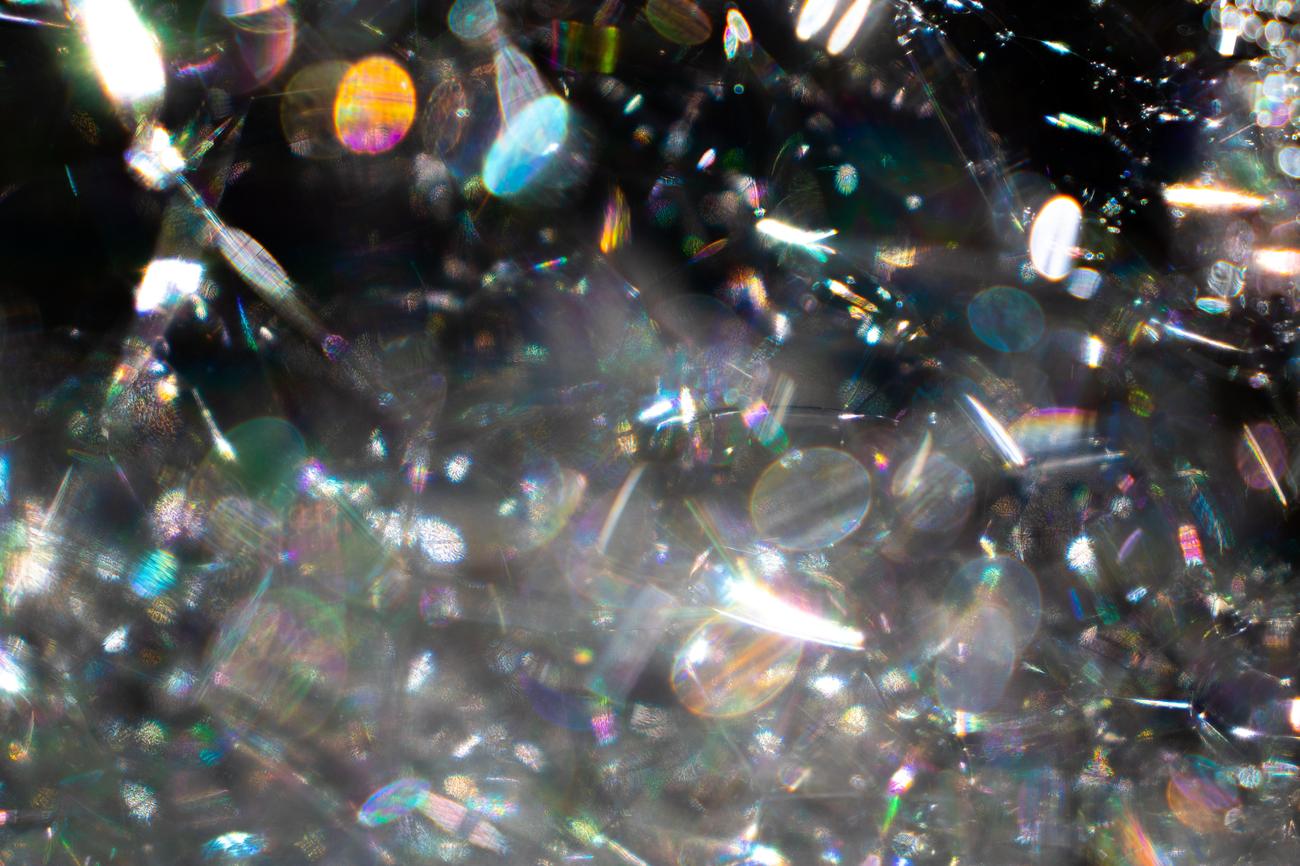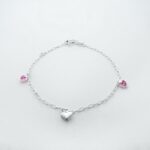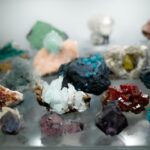Unveiling Opals: Captivating Facts about these Irresistible Gems
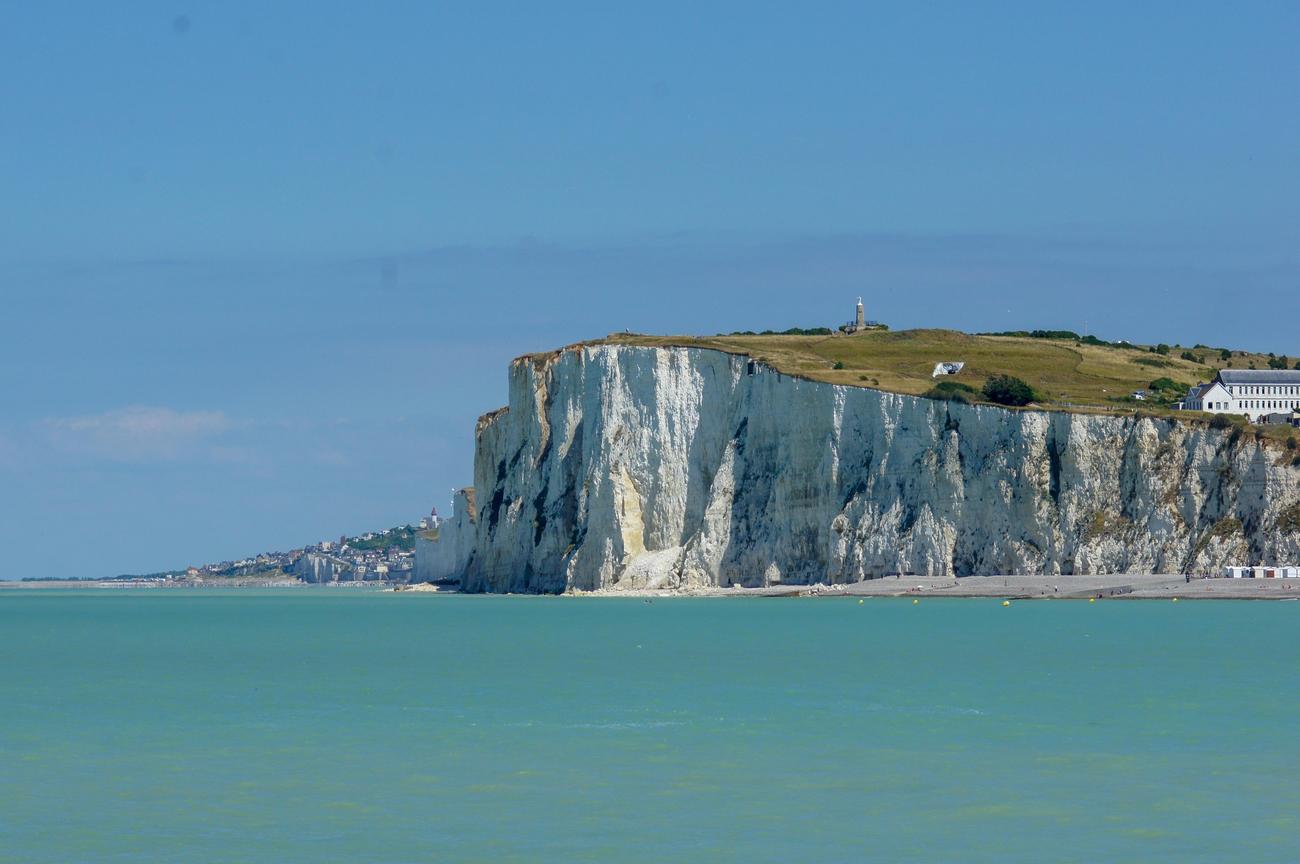
Opals hold a mystical allure that has fascinated gem enthusiasts and collectors for centuries. As a highly experienced geologist specializing in gemology, I am thrilled to embark on a journey through the captivating world of opals, where every discovery is a mesmerizing adventure. Opals, reminiscent of kaleidoscopic dreams, possess a mesmerizing quality that sets them apart from any other gem. With their enchanting play of colors and unique properties, these irresistible gems have intrigued civilizations throughout history. Join me as we delve into the enigmatic realm of opals, uncovering their formation, origin, and the secrets they hold within their shimmering depths.
Unveiling Opals: Captivating Facts about these Irresistible Gems
Opals, those mesmerizing gemstones that seem to hold an entire galaxy within their depths, have fascinated humans for centuries. But did you know that opal is not a mineral but rather a stone? It’s true! This remarkable gem is known for its stunning array of colors and patterns, which are caused by minor impurities. From blues and blacks to whites, yellows, reds, and greens, opals come in a wide range of captivating hues, each with its own unique charm.
It’s also interesting to note that opals vary in hardness. While some opals are relatively soft, others are surprisingly durable. But how exactly are opals formed? Well, prepare to be amazed! Opals actually come into being through rain. Yes, rain! Over time, water seeps into the ground, picking up silica and other minerals along the way. As this water evaporates, it leaves behind deposits of silica, eventually forming the stunning opal we know and love.
Now, here’s a mind-blowing fact: opal has not only been found on Earth but also on Mars! That’s right, this enchanting gemstone has a cosmic connection. Scientists have discovered opal-like deposits on the Red Planet, suggesting that similar geological processes might have occurred there. It’s truly awe-inspiring to think that the mysteries of opal extend beyond our own planet.
For those born in October, opal is the official birthstone and carries symbolic meaning. It represents purity and hope, making it a truly special gem for those fortunate enough to call it their birthstone. But it’s not just symbolism that makes opals unique. They are also believed to be protective stones, offering a shield against harm and bringing good luck to the wearer.
Throughout history, opals have captured the imagination of artists, writers, and creatives. Their captivating play of colors and patterns has inspired countless masterpieces. It’s no wonder that opals have been revered as lucky gemstones by many cultures. However, not everyone has embraced their luckiness. In fact, some have tried to discredit the opal’s mystical properties. But can the beauty and allure of opals truly be dismissed? That’s for you to decide.
Opals are undoubtedly one of the most beautiful gemstones in the world. Their mesmerizing display of colors and patterns is truly bewitching. Whether it’s the shimmering blues that resemble the ocean’s depths or the fiery reds that evoke the flickering flames of a bonfire, opals enchant us with their iridescence. It’s no wonder they hold such value and are treasured by collectors and enthusiasts alike.
To delve deeper into the captivating world of opals, you can visit DreamofStones.com and OpalAuctions.com. These websites offer a wealth of information about opals, from their history and formation to market trends and identification techniques. So, why not embark on a thrilling journey through the intricate world of these irresistible gems?
In conclusion, opals are more than just gemstones. They are windows into the Earth’s magnificent treasures, revealing secrets about our planet’s geological wonders. With their stunning range of colors, unique formation process, and rich symbolism, opals continue to captivate and inspire. So, the next time you catch a glimpse of an opal’s ethereal beauty, take a moment to appreciate the countless wonders it holds within. As they say, sometimes the greatest treasures are found in the most unexpected places.
“Opals, a kaleidoscope of nature’s artistry, their vibrant colors dance upon the canvas of life, inviting us to explore the depths of wonder.”
Interesting Facts About Opal
Opal minerals have always fascinated people with their stunning play of colors. These gemstones possess an otherworldly beauty that often seems to come alive as light dances across their surface. If you’re curious to learn more about opals and their mesmerizing qualities, we’ve got you covered. Discover some intriguing facts about opal mineral, such as its formation and unique characteristics. So, if you’re eager to delve into the captivating world of opal, click here for fascinating facts about opal mineral: facts about opal mineral.
Opals also have a way of appealing to young minds, capturing their imagination with their vibrant hues and mystical allure. To enhance your child’s understanding and spark their curiosity about this remarkable gemstone, check out these engaging facts about opal designed specifically for kids. They’ll be enthralled to learn about how opals form and the secrets they hold. Dive into the wonders of opals by clicking here: facts about opal for kids.
Get ready to be amazed by the enchanting world of opal minerals and their delightful characteristics. Don’t miss the chance to uncover these captivating facts about opals that will leave you in awe. Whether you’re an adult seeking to explore their geological wonders or a parent looking to ignite your child’s fascination, these facts are sure to leave a lasting impression. Journey into the extraordinary realm of opals by clicking on the links above!
Opal Is Quartz
Opal may appear similar to quartz at first glance, but in reality, they are two distinct gemstones with unique properties. While quartz is a crystalline mineral composed of silicon and oxygen, opal is a hydrated amorphous form of silica. Unlike quartz, opal lacks a crystalline structure and has irregular shapes. It is this difference in structure that gives opal its mesmerizing iridescence.
Opals are formed through intense heat that melts silica together with water and other elements. This unique combination creates small spheres of silica arranged in a regular pattern, with water filling the spaces between them. It is this arrangement that causes opals to diffract white light and display a stunning array of colors. In contrast, quartz is typically transparent or translucent and has a vitreous luster.
Opal’s lack of crystalline structure sets it apart from quartz, and it’s this distinctive feature that contributes to its captivating iridescence.
Opals come in a variety of colors, from brilliant blues and vibrant yellows to deep blacks and translucent whites. Each opal has its own personality, exhibiting a play of colors that can range from subtle to bold. This diversity in color is a testament to the unique formation process of opals, and it adds to their allure as gemstones.
Opal is often associated with creativity, intuition, and emotional healing. Its connection to rainbows in Indigenous Australian mythology further enhances its mystical and spiritual significance. This rich symbolism has contributed to the popularity of opals in jewelry and the belief in their protective and luck-bringing properties.
The captivating play of colors exhibited by opals mirrors the beauty of nature, evoking a sense of wonder and enchantment.
While opals are treasured for their captivating display of colors and patterns, it’s important to note that they are relatively softer gemstones compared to others. This means they require special care to avoid damage. It is also worth mentioning that opals have faced skepticism throughout history, with some questioning their authenticity and durability. However, with the right knowledge and expertise, one can appreciate the unique beauty and inherent charm of these iridescent gems.
Opals may be softer stones, but their delicate nature only adds to their allure. With proper care, they can be cherished for a lifetime.
Opals have been cherished for centuries and have been found in various regions across the globe. Australia’s “Outback” is particularly known for its opal mining and production. The vast, arid expanse of the Australian landscape has unveiled opal formations that continue to captivate and inspire gem enthusiasts worldwide.
The rugged Australian outback serves as the stage for the captivating dance between earth and water, birthing opals of unrivaled beauty.
In conclusion, opal is not quartz. While they may share some superficial similarities, they differ in composition, structure, and appearance. Opal’s unique formation process, lack of crystalline structure, and stunning display of colors set it apart from quartz. Opals continue to fascinate geologists, gemologists, and jewelry enthusiasts alike, revealing the Earth’s geological wonders and bringing a touch of iridescence to our world.
Opals, with their distinctive charm and unparalleled beauty, stand as a testament to the magic hidden within the Earth’s depths.
An Opal Gem Can Display Many Colors
Opals, those captivating gems that seem to hold a world of colors within their depths. They are truly nature’s mesmerizing treasures. With their ability to reflect and refract light, opals create a breathtaking play of colors that dances and changes as you move. Picture a kaleidoscope of hues, shifting and shimmering, inviting you into a vibrant visual feast. But what exactly makes opals so uniquely colorful?
As a seasoned geologist with a deep fascination for opals, I’ve spent countless hours delving into the mysteries of these iridescent gems. Let me guide you through the enchanting world of opals, where every color tells a story.
Opals, with their high water content ranging from 3% to 21%, possess a secret that sets them apart from other gemstones. Within their composition lies a stunning interplay of silica spheres, which act as tiny prisms for light. Think of these spheres as nature’s own light-bending mechanisms, splitting and diffracting light into a mesmerizing spectrum of colors. It’s as if opals hold a miniature rainbow within their essence.
But what makes opals truly fascinating is their ability to showcase a phenomenon known as “play-of-color.” Hidden within the depths of certain opals are intricate patterns or images that seem to dance and play as you move the gem. It’s like witnessing a secret spectacle, a personal light show that captures your gaze and holds you in awe. Just a single glance at an opal with a play of color can have a hypnotic effect, leaving you spellbound.
Opals come in a vast array of colors, each as captivating as the last. You’ll find opals in shades of orange, yellow, red, green, blue, and purple, with variations and combinations that are truly a feast for the eyes. But it is the elusive black opals that hold a special place in the gemstone world. Considered one of the rarest gemstones, black opals boast a captivating play of color against a dark, mysterious backdrop. It’s as if the colors intensify and come to life against the deeper background, creating a truly breathtaking spectacle.
Now, let me take you on a journey into the fascinating formation of opals. Approximately 30 million years ago, the Earth witnessed a unique event that set the stage for opals to emerge. Through the deposition of silica in underground cavities, opals were birthed. Imagine this process as nature crafting delicate masterpieces, layer upon layer, over eons of time. The result? Opals that hold stories of past worlds, secrets hidden deep within their core.
But how does such a wondrous display of color come to life within opals? Here’s where the magic truly happens. When light passes through the gaps between the silica spheres, it is forced to bend and split, giving birth to the captivating colors we adore. It’s like witnessing a prism at play, as the different colors of the spectrum come alive within the opal’s very structure. The play of color in opals is a testament to the wonders of nature, a celebration of light and beauty in its purest form.
When it comes to appreciating the beauty of opals, it’s not just about their stunning colors or fascinating formations. Opals have become cherished additions to jewelry collections around the world. Their unique and iridescent display of hues makes them the perfect gemstone to capture attention and spark conversation. From delicate earrings to ethereal pendants, opals lend an air of mystery and elegance to any piece of jewelry.
But let’s not forget the symbolism and cultural significance that opals hold. Opals have been regarded as good luck stones, believed to protect their wearers from harm. They have been treasured for centuries and revered by ancient civilizations. A single opal can be a symbol of hope and purity, a glimpse into the beauty of the world hidden within stone.
As we conclude our journey through the captivating world of opals, let me leave you with one thought. Opals, with their kaleidoscope of colors, reflect the wonders of our Earth’s geological history. They are a testament to the forces of nature, crafting intricate masterpieces that never fail to mesmerize. So next time you gaze upon an opal gem, take a moment to appreciate the enchantment and complexity that lies within. Let the colors transport you to a world of beauty and intrigue, and remember, an opal gem can display many colors, but its true magic lies in the stories it holds within.
“Opals, with their kaleidoscope of colors, reflect the wonders of our Earth’s geological history.”
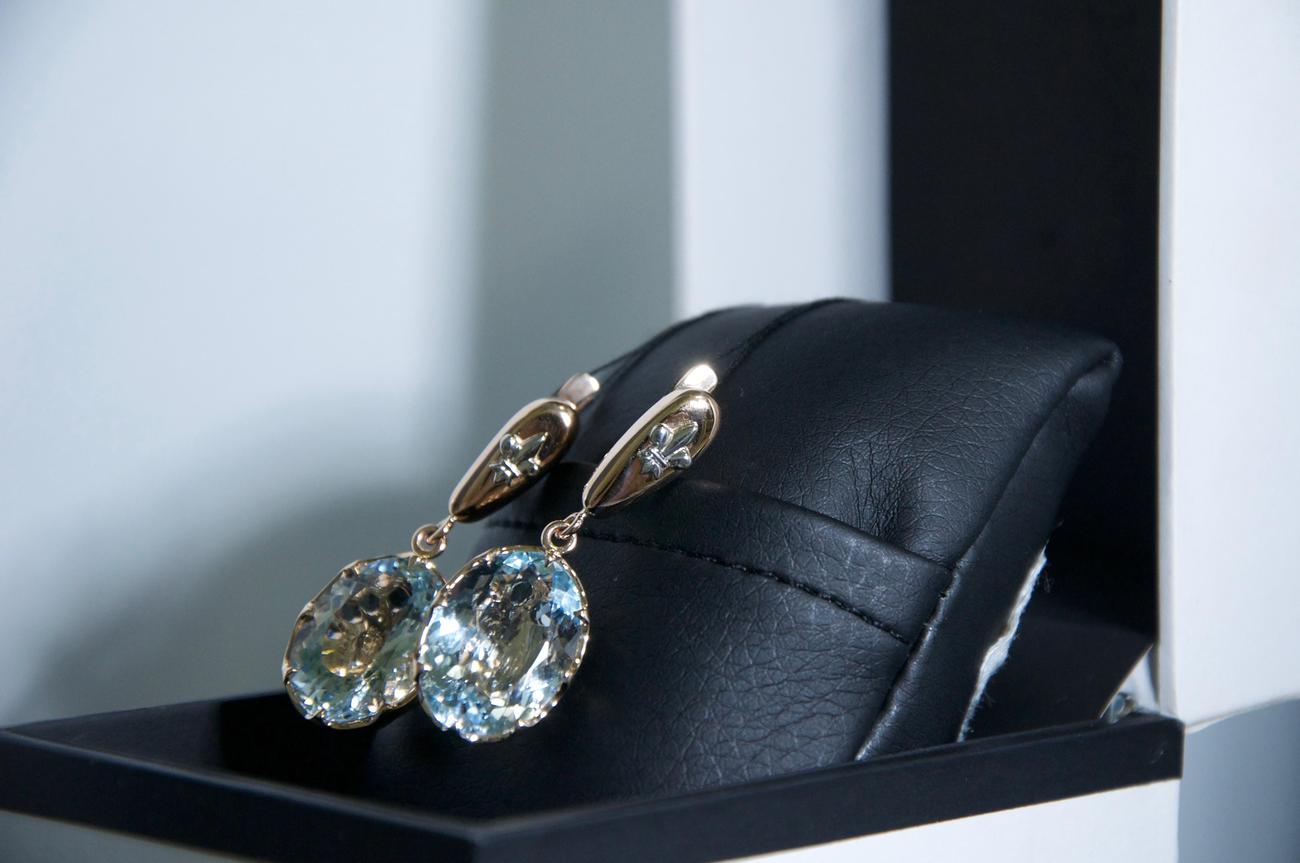
FAQ
Question 1: Are opals a type of quartz?
Answer: No, opals are not a type of quartz. Opals are a hydrated amorphous form of silica, while quartz is a crystalline mineral composed of silicon and oxygen.
Question 2: Can opals display multiple colors?
Answer: Yes, opals can display a wide range of colors. They come in various shades, including blue, black, white, yellow, red, green, and more.
Question 3: What is the rarity of black opals?
Answer: Black opals are considered one of the rarest gemstones. Their dark body tone and vibrant play of color make them highly sought after by collectors.
Question 4: Where are opals found?
Answer: Opals can be found in different locations around the world, including Australia, Brazil, Ethiopia, Mexico, and the United States. Australia, particularly the “Outback,” is known for its abundant opal deposits.
Question 5: What factors affect the value of opals?
Answer: The value of opals is influenced by factors such as the play of color, clarity, size, and overall quality of the gemstone. Opals with vibrant and captivating displays of color are typically more valuable.
- China II Review: Delicious Food & Speedy Service - April 17, 2025
- Understand Virginia’s Flag: History & Debate - April 17, 2025
- Explore Long Island’s Map: Unique Regions & Insights - April 17, 2025
